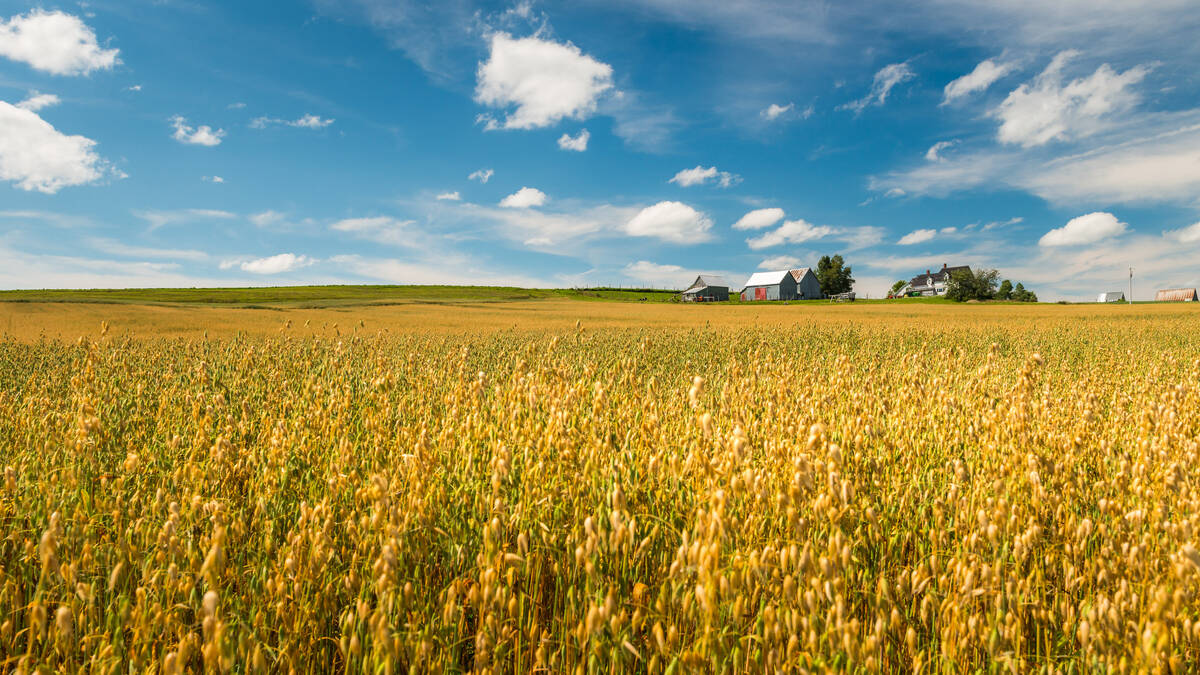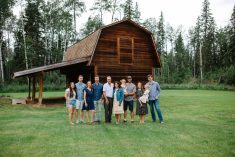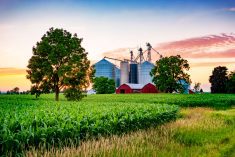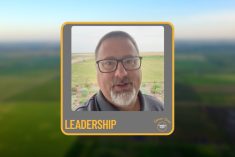CG:Why are we seeing so much new technology hit the market all at once?
Jim Walker:I can only answer from our standpoint, but five years ago the company made a conscious decision to do two things. First and foremost was to assure top reliability in our existing products in the marketplace. Then, second was to take us to a leading competitive position with our core-competency products. What we re seeing now is, we have the highest reliability rating for our products that I can remember.
Read Also

Risk management for the farm means considering people, too
Wheat fields in New Brunswick, Canada.
Now along with the completion of our Tier 4 Magnums and Steigers, which we just introduced, we re introducing Tier 4 on the combines for next year. We ve completed a massive renovation of our product offering, on virtually every core product we offer.
CG:Are we going to continue to see this pace of new product releases from Case IH in the coming seasons, or was this an exceptional year?
Walker:I think the pace may slow somewhat. We have plans for some avenues we haven t completed yet, like CVT transmissions and tracks on row-crop tractors. Those are in our short-term future plans. But for me, the next generation of product technology is certainly the precision-farming field. That s going to be the product of the future for us.
CG:Now that Case IH has its plan and technology in place to meet Final Tier 4 engine emissions standards, will that free up engineering resources to focus on other systems, like precision farming products?
Walker:What we did was take advantage of our heritage and engine development experience with Iveco (a sister company also owned by Fiat Group). So, yes we did put quite a few resources toward the development of Tier 4, but really it was more about adapting it to agriculture. We had already been running Tier 4 engines in the truck industry for five years or so, especially in Europe.
We really didn t think we had to make a decision about which technology we were going with, EGR or SCR. We already had our minds made up. But we had to make sure it was applicable to our agricultural products. I think a lot of companies had to put a lot of resources toward that, but in our case, with a proven example, it really doesn t free up that much (engineering resources) in our agricultural sector.
CG:This year you announced the formation of a new division within Case IH that will work with Trimble, your technology provider, to create new precision- farming products for the brand. Has demand in that area grown significantly?
Collin Rush:It (precision farming) used to be an attachment, even up to just a few years ago. Precision farming used to be defined as just guidance technology. But what we re seeing now is it s becoming impossible to separate the machine from the technology. The integration is huge. We ve stopped treating it as an add-on; we re treating it as a ground-up integration. Technology going forward is going to be completely integrated into that machine with telematics and vehicle control. We ve got things in the works ready to release in the next 12 to 18 months that will be game-changers for a lot of our equipment. It s a very critical part of our plans.
Walker:It (precision farming technology) has already shown it s a necessity for the future. Up until this year, tractor auto-guidance ready for plug and play used to be an option; now it s standard equipment. We know customers are going to at least want auto-guidance. Three or four years ago when it was an option, we used to have a 10 to 30 per cent rate of take.
CG:Is the demand for guidance and precision technology confined to high-horsepower equipment or is it filtering down to lower-horsepower machines?
Rush:We ve had a lot of requests from fleet customers who run tractors in the 100-horsepower range, that they want telematics monitoring of their equipment. It s being integrated in all areas. For small producers it s not as big a request, certainly. But I d say it s 80 per cent of our focus right now. Machines all across our product range are going to have some sort of technology influence from telematics.
CG:Is the joint effort with Trimble going to result in some Case IH-specific products that won t be available through Trimble s own product line?
Rush:Yes, absolutely. That is part of our agreement to provide branded products that integrate with our ISOBUS systems. There will be things that won t be available through Trimble s other dealers.
CG:Speaking of ISOBUS, is Case IH moving toward full ISOBUS-compliant systems?
Rush:Where we can. We ve put out that open architecture system to at least be compatible with aftermarket systems. We do have some proprietary technology. We truly believe with mixed fleets ISOBUS is the key to meeting producers needs.
CG:Case IH is increasing the number of models offering CVT transmissions. Is there a growing demand for CVT?
Walker:I think some sectors, such as potato or beet growing that use the type of harvesting equipment that requires constant speed and torque, along with manure hauling and those types of things, created the demand for it. As discretionary income became a little more available, people thought that was the best new transmission available, and a lot of people were equating IVT or CVT with maximizing fuel economy.
Now, a lot of manufacturers (including Case IH) have introduced performance management systems that develop the best fuel economy (in any transmission type). Up until this point IVT/CVT represented fuel economy or a specific-task transmission. Now I think fuel management systems have separated out the need for many CVTs. But they ve found their niche now, and they ll remain important for the industry.
CG:The new Case IH Magnum with 370 horsepower is the largest tractor on the North American market to offer a CVT transmission. Will CVTs be available in even larger tractors in the future?
Walker:We re leaving ourselves options. If we see a demand for it with other implement sizes and horsepower requirements, we ll go there. The other avenue we re exploring is taking the Steiger styling, from the point of a four-wheel drive, and putting that into a row-crop, Quad Trac-type system. That might be the answer to producers needs as opposed to a CVT.
CG:The Case IH dealer network operated by Rocky Mountain across the West is the largest in Canada. Is the large multi-outlet dealership group the best way to provide the level of sales and service needed by modern farmers?
Walker:Rocky Mountain is a publicly traded company and there is another in the U.S., Titan Machinery, which is also publicly traded. In working with dealers that large we re certainly showing we re not afraid of being involved with that type of ownership. I certainly think whether it s publicly or privately owned, we re open to that; we re not trying to drive it one way or the other. The most important thing is that your footprint (as a dealer) has to be one that gives you the economics to make you competitive. It (dealership size) is competitively driven.
CG:Farm size, too, is growing. If you look to the future, do you see machinery size and the demand for horsepower continuing to grow as well?
Walker:One of the things that drives the industry is the need to be profitable. We had our ups and downs in the 80s and 90s, which led to growth in farm size. There certainly was a consolidation all across the industry that happened quickly, but now with the new economics, I think it s slowed a bit. There are a limited number of acres out there and not all of it is for sale. It s very clear that as other opportunities appear, such as specialty crops or as the economics of farming change, there s going to be some balance out there in the size of farm operations. The used equipment market will demand that also. We can t just sell all new, large equipment and expect that to disappear. It has to go somewhere.
CG:Farm equipment manufacturers have been enjoying strong profits and growth despite trouble in the global economy. Do you foresee continuing strong machinery sales?
Walker:We see good commodity prices driving decent farm income for the next number of years. As long as we have a strong global demand for farm commodities, these prices, along with a weaker U.S. dollar, will sustain demand for machinery.CG
———
More new tractor and combine models have been rolled out in 2011 than ever before, thanks in part to strong farm commodity prices that have farmers buying equipment at a pace that has assembly lines working at top speed.
Those farmers aren t just looking for the new-car smell. They re demanding bigger, better and more efficient. In today s superheated marketplace, last year s technology is already out of date, and manufacturers can t afford to sit on their hands.
For an insider s perspective, Country Guide sat down with two senior executives at Case IH. Jim Walker is head of the company s North American agricultural operations, and Collin Rush is senior director of speciality business in North America. Here s how they see the industry, the insatiable demand for new technology, and future market demand.
———
About Case IH
Case IH along with sister brand New Holland (and Steyr in Europe) make up the agricultural machinery brands consolidated under CNH Global, a majority-owned subsidiary of Fiat Group. Case IH products are sold through a network of about 4,900 dealers in more than 160 countries around the world. In 2010, North America accounted for about 41 per cent of CNH s nearly US $14.5 billion in net sales, making it the second-largest global farm equipment manufacturer behind John Deere.
Case IH was formed with the merger of Case Corporation and International Harvester in 1985, and it can trace its origins back as far as 1842, when the original J. I Case company was founded. In 1999, Case IH became part of CNH Global.















